Sure, the tourists sites were great, but Twelve Mile Circle readers know I like to follow tangents even when I do that. I’m always on the hunt for the unusual, or at least the unusual to me. I’m sure everything seemed perfectly normal to anyone from Japan. So I made sure I savored all the “culture shock” moments, and there were plenty of those during my five-night stay.
Tokyo Metro
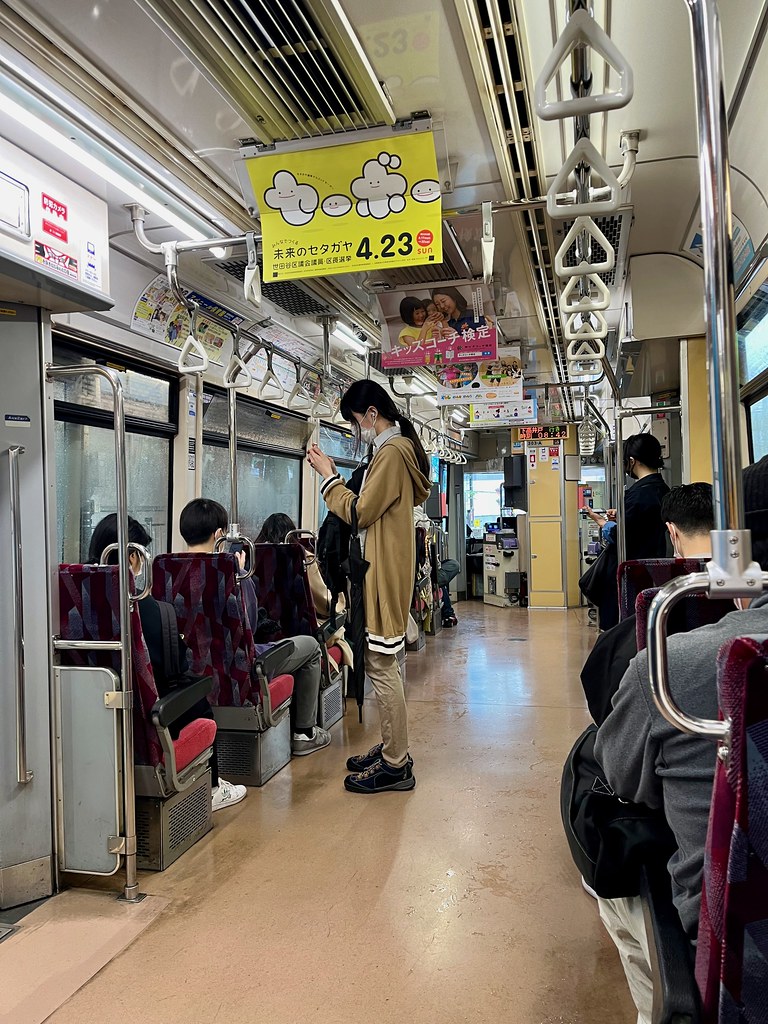
There’s no better way to explore a new city than by public transportation. The Tokyo Metro looked daunting and the system map terrified me at first glance. However, the layout was very logical. Each line had a distinct color and letter of the alphabet. Every station on a line had a sequential number. So as long as I remembered to look at the silver line on the map and point towards H-03 I could make it to the stop nearest my hotel. The H equated to Hibiya Line and 03 equated to the Hiro-o station.
Google maps helped a lot too. It generated detailed instructions with train lines, station stops, transfers and walking directions. The $10 per day I paid my local phone provider for international service was worth every penny. I got around just fine even though I didn’t know a lick of Japanese. And the Tokyo Metro went practically everywhere! So I became pretty adept by the time I left.
By Taxi
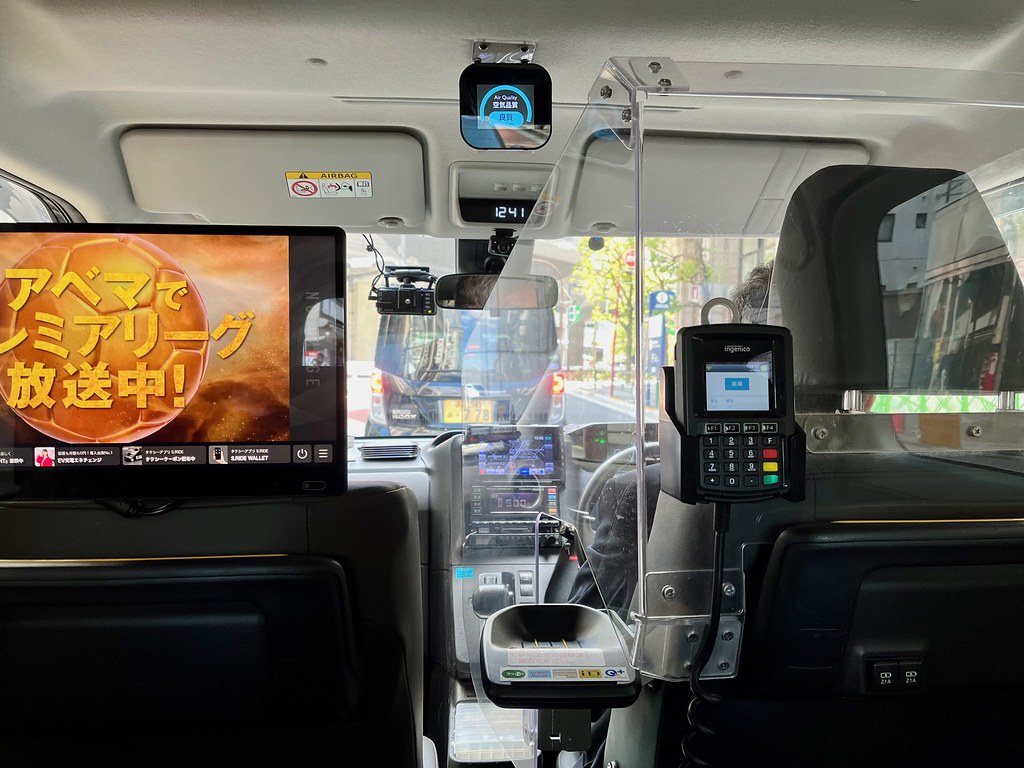
Then there was that one time I arrived at the wrong station because the Latin alphabetic spelling of two stations was nearly identical. Sure, I could have spent the next hour transferring between lines to fix the error but I had sites I wanted to see! So I got my first Tokyo taxi experience too. It was considerably more expensive than the Metro and it moved pretty slowly along surface streets through heavy traffic. However it took the most direct route and sometimes one has to throw money at a problem to make it go away. The strong dollar to yen conversion softened the blow (~135 Yen per U.S. Dollar at the time).
Akihabara
I really wanted to see Akihabara (map), the district famous for electronics, anime, manga and video games. It included all that and more in giant department stores and narrow alleyways with countless hole in the wall shops. People queued up — invariably young men — waiting for stores to open so they could buy the latest of whatever popular collectable might be released that day.
Nightfall brought its own interesting features as activities intensified. Women beckoned people into the maid cafes but that all seemed a little too strange for me. I’m told they’re actually rather wholesome but still. That’s one facet of Japanese culture I’ll leave to the Japanese. I suppose they’d say the same thing about Hooters in the U.S.
The Scene
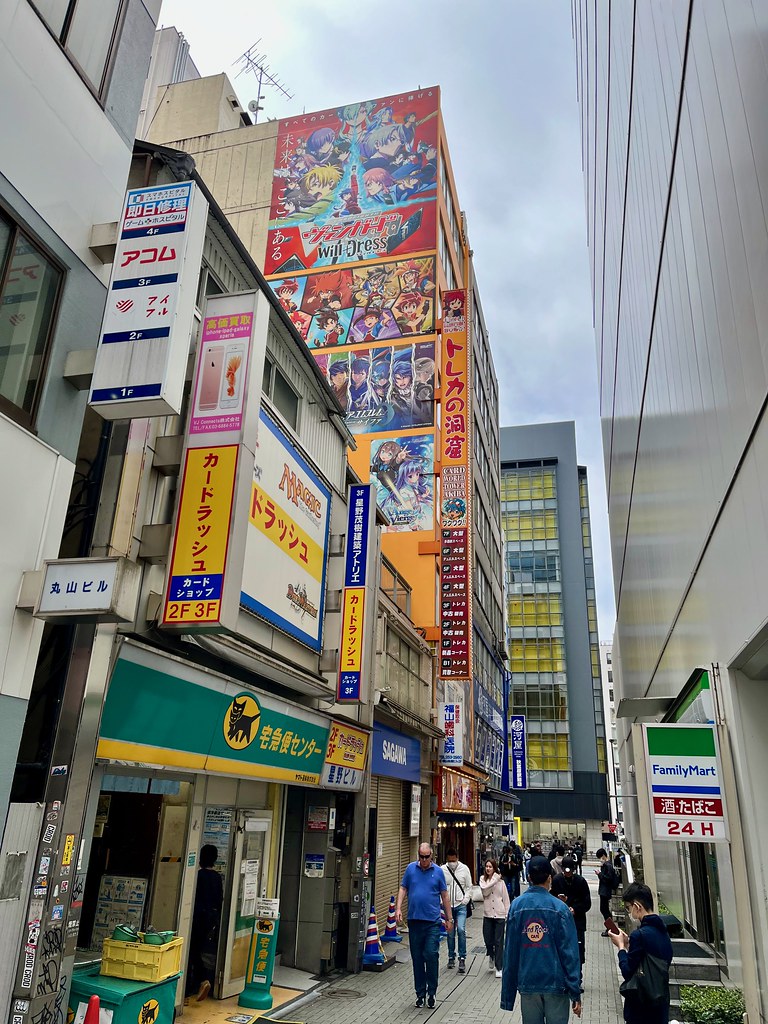
Akihabara offered a dizzying assortment of oddities in a concentrated area. I’m not sure I’ve encountered a place quite like it in my traveling experience up until now. Everything extended vertically too; the signs, the lights, the artwork, the massive video screens. It was a visual delight.
Claw Games

Entire stores in Akihabara featured nothing but claw machines. Plenty of people tried their luck on items that they could probably purchase cheaper nearby, considering the number of attempts actually needed to win a prize. I suppose it was more about the thrill of the chase and the dopamine hit. But what if we could get that favored doodad for only 200 yen (~$1.50)! A few pachinko parlors also lined the streets offering another type of low-grade gambling. It seemed to be a rather popular Sunday morning activity from what I could tell.
Vending Machines
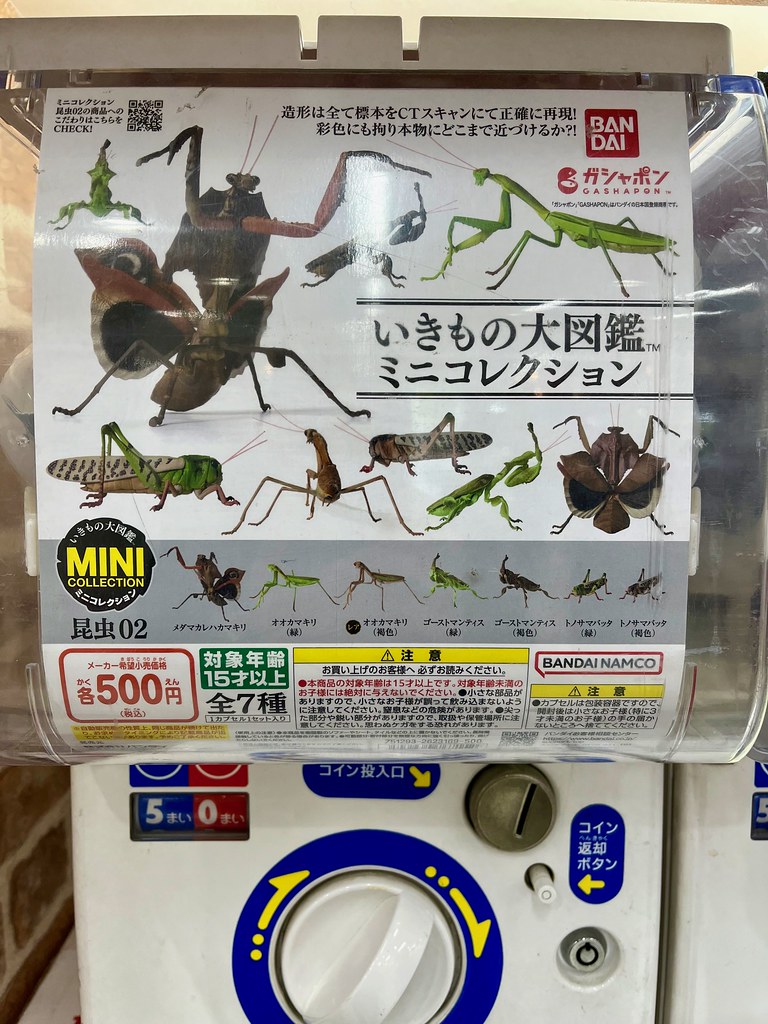
Who wouldn’t want a plastic bug for only 500 Yen (~$3.75)? Well, probably lots of people. However, I have a kid pursuing a university degree in entomology so this was a no-brainer. I wanted to find something bug related so I happily emptied my pocket change into the machine and turned the crank. I can report that this inexpensive gift was well received.
It wasn’t just bugs though. There were entire banks of vending machines selling pretty much anything one could imagine. Snacks and beverages were more common although sometimes something more unusual appeared. Like plastic bugs.
Shibuya Scramble Crossing
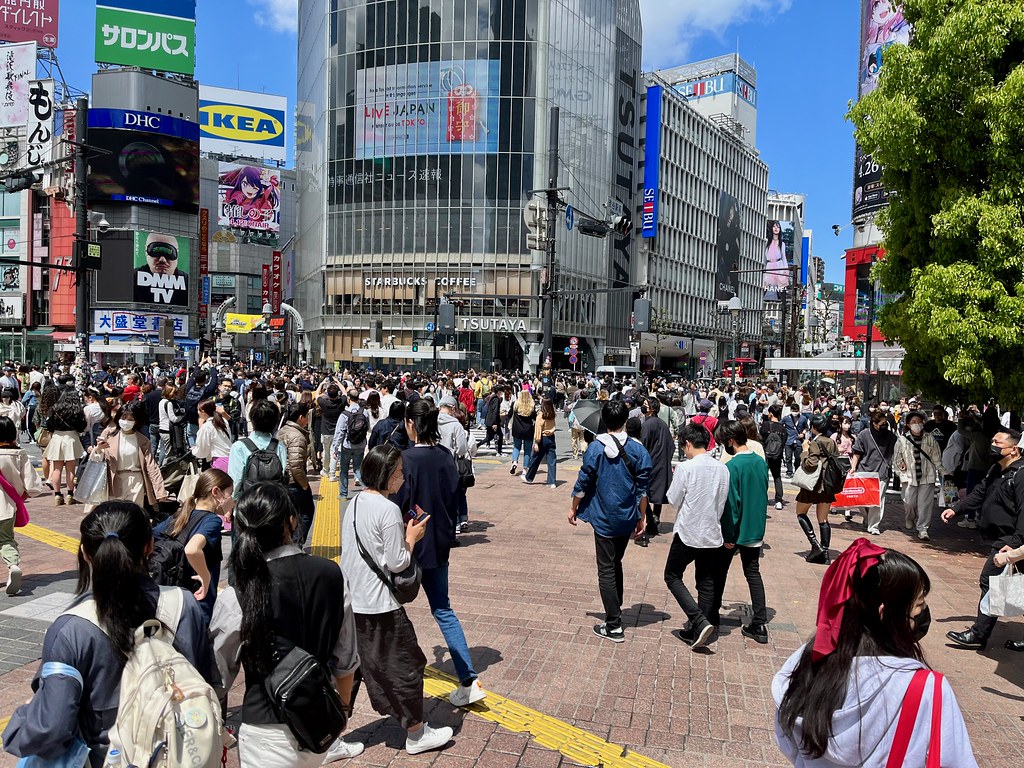
A pedestrian crossing in Tokyo’s Shibuya ward merited special attention. I’d heard about the so-called “busiest pedestrian crossing in the world” and I had to experience it in person (map). Is it truly the world’s busiest? I have no idea and I don’t know how anyone would ever calculate it. However, I can say that it drew quite a crowd. The buildings around it resembled Times Square in New York City, and it generated a huge amount of foot traffic. So the city had to come up with a way to keep everyone moving.
Traffic lights turned red and halted all vehicular traffic into the intersection every couple of minutes. Then it became controlled chaos as people cross the intersection in any direction they liked, including diagonal. It’s quite the site to behold or experience. It amazed me so much that I did it twice.
Plastic Food

I didn’t have to guess food selections or specialties at a lot of restaurants. Often they provided elaborate window displays of typical meals. However there was a twist: it wasn’t actual food but rather plastic food replicas. They were amazingly detailed and lifelike. So even if I couldn’t decipher Japanese lettering I could see what was available and what it would cost. In this photo most cost about 1,100 Yen (~$8.15) so someone could eat at a pretty reasonable price. Of course someone could eat a lot more elaborately and I did that sometimes too. Either way it was nice to know there were plenty of options at all price points.
Articles in the Asia-Pacific Series
- Oahu: Honolulu Waterfront
- Oahu: Beyond Waikiki
- Japan: Tokyo Temples and Tourists
- Japan: Exploring Tokyo
- Japan: Farther Afield
- South Korea: Seoul
- South Korea: The DMZ
- Postscript: Interesting Signs
- Postscript: Brew It
See Also: The Complete Photo Album on Flickr

Leave a Reply